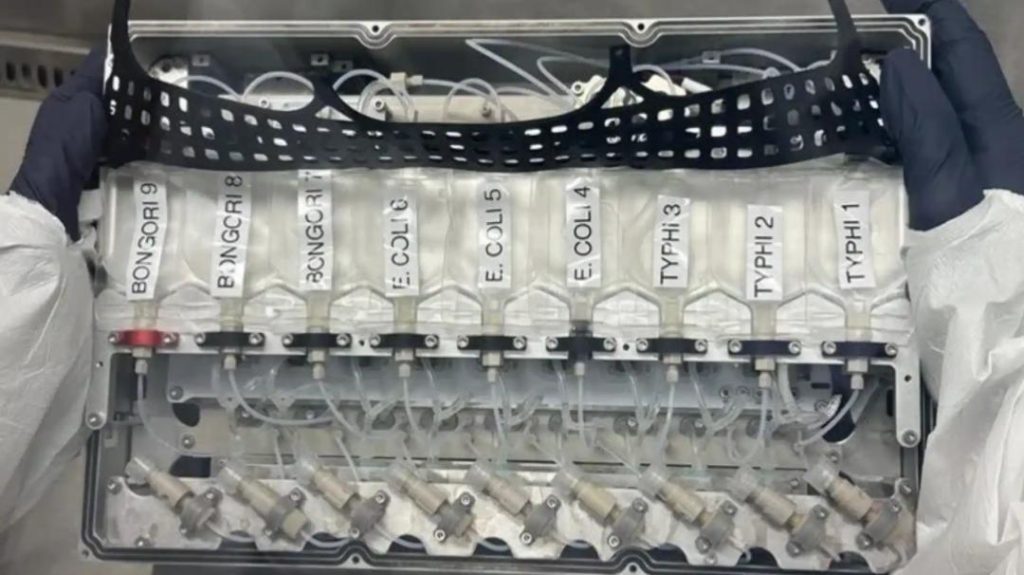
Disease-causing bacteria sent to space
On August 1, SpaceX successfully launched its Crew-11 mission to the International Space Station (ISS), carrying four astronauts and a unique experiment that has sparked significant interest in the scientific community. Among the crew members and cargo on board is an experiment designed to study the growth of disease-causing bacteria in microgravity. The study, developed by scientists at Sheba Medical Center in Israel in partnership with US-based SpaceTango, aims to shed light on how microgravity affects bacterial growth and gene expression.
The experiment involves three types of bacteria: E. coli, Salmonella bongori, and Salmonella typhimurium. These bacteria are all known to cause diseases in humans, with E. coli being a common cause of urinary tract infections and Salmonella being linked to food poisoning. By studying the behavior of these bacteria in space, scientists hope to gain a better understanding of how microgravity can impact the growth and development of microorganisms.
The study is significant because it has the potential to inform strategies for preventing the spread of diseases in space and on Earth. In space, the lack of gravity can affect the way fluids move and interact with surfaces, which can, in turn, impact the growth and spread of bacteria. By studying how bacteria behave in microgravity, scientists may be able to identify new ways to prevent the spread of diseases in space missions and potentially even develop new treatments for diseases on Earth.
The experiment itself is relatively simple. The bacteria will be grown in specialized containers on the ISS, where they will be monitored and observed over the course of several weeks. Scientists will then analyze the results to determine how the bacteria have changed in response to the microgravity environment.
The study is not without its challenges, however. One of the biggest hurdles is ensuring that the bacteria remain healthy and active during the experiment. In space, the lack of gravity can affect the way bacteria move and interact with their surroundings, which can make it difficult to maintain optimal growth conditions.
To overcome this challenge, the scientists involved in the study have developed specialized containers that mimic the conditions found on Earth. These containers, known as “bioreactors,” are designed to provide the bacteria with the necessary nutrients and oxygen to grow and thrive in microgravity.
The study is also significant because it represents a new area of research for the ISS. While the station has been used for a wide range of scientific experiments in the past, this study marks one of the first times that disease-causing bacteria have been sent to space.
The experiment is expected to provide valuable insights into the behavior of bacteria in microgravity and could potentially lead to new breakthroughs in the field of disease prevention. As the world continues to explore the vastness of space, it is imperative that we understand the risks and challenges associated with space travel, including the potential for disease outbreak.
In conclusion, the study of disease-causing bacteria in space is a significant and exciting area of research that has the potential to inform strategies for preventing the spread of diseases in space and on Earth. By studying how bacteria behave in microgravity, scientists may be able to identify new ways to prevent the spread of diseases and develop new treatments for diseases on Earth.






